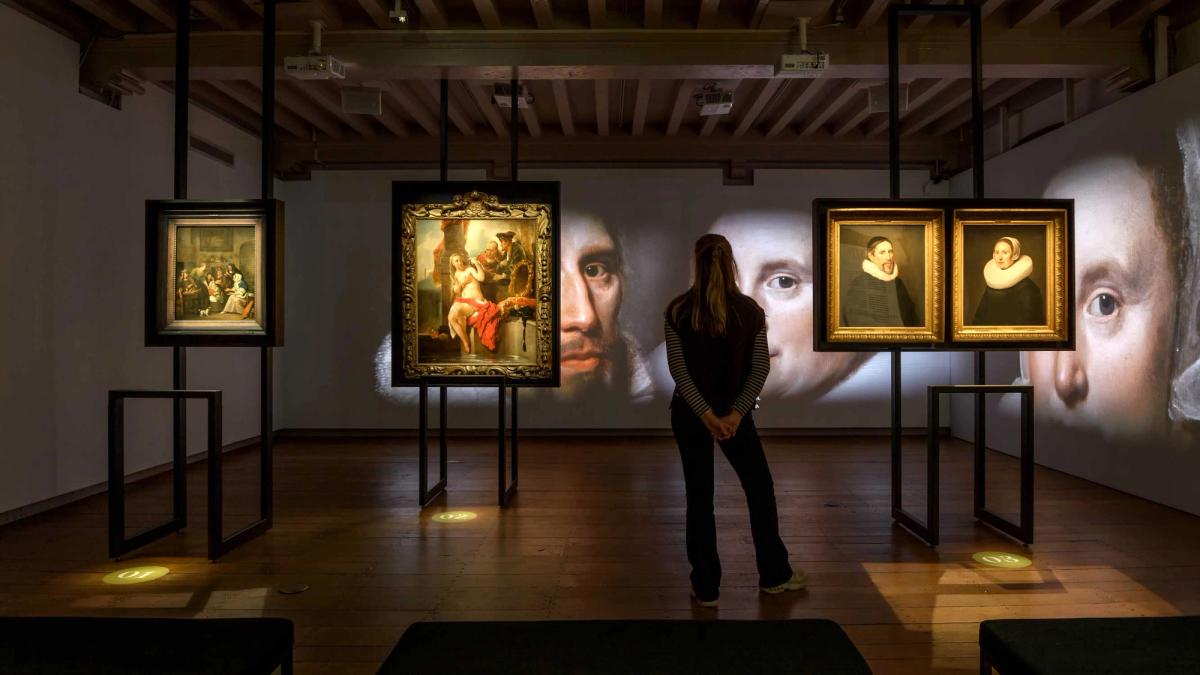Ode to Antwerp: the Secret of the Dutch Masters, running until 17 September at the Museum Catharijneconvent in Utrecht, argues that key developments underpinning the 17th-century flowering of Dutch painting were actually made in what is now Belgium.
“We wanted to show a Dutch public painting from the 16th and 17th century, and our project group quickly came to the heart of the matter: without Antwerp in the 16th century, the art of the Dutch 17th century would not have existed,” says the curator Micha Leeflang.
The exhibition, created with the Phoebus Foundation in Antwerp, tracks how the 16th-century painters of Antwerp laid the foundations for techniques typically associated with Dutch 17th-century painting—once known as the Golden Age, although this phrase is falling out of usage for its association with slavery.
Antwerp, with its massive inland harbour, was the original trading metropolis for north-western Europe, a furnace for trade in wool, spices and diamonds as well as home to a growing middle class who would soon want to fill their walls with art. The exhibition of around 80 paintings shows how Belgian painters such as Joachim Patinir, Pieter Aertsen and of course Peter Paul Rubens developed techniques that would later be perfected in Amsterdam: genre pieces, realistic portraits, still lives, gritty-coloured landscapes and church interiors.
At the time, the area of Flanders included the Netherlands with an economic centre at Antwerp; but by 1585, as the lowland rebels fought an Eight Years’ War with the Spanish government, the city fell and Protestants were given four years to leave (or convert). This, the exhibition shows, led to a massive exodus of artists and also their wealthy buyers.
“The most important 17th-century painters from Holland were Vermeer, Rembrandt and then Frans Hals—who Dutch people don’t know was born in Antwerp and went after the fall of Antwerp with his parents to Haarlem,” Leefland says. “He was proud of his origins and signed many of his paintings ‘Frans Hals of Antwerp’. He is a typical painter from Holland… who actually wasn’t from Holland at all!”
The exhibition shows an early Rembrandt, The Baptism of the Eunuch, alongside a work by the Antwerp artist Hans van der Elburcht 60 years earlier—with a similar vertical format and pastel palette. Landscapes by Joachim Patinir, another Antwerp painter, are presented as laying the ground for the panoramic landscapes of Jacob van Ruisdael, “with the typical Dutch cloudy skies”, Leefland says.

Photo: Mike Bink
Katharina van Cauteren, chief of staff at the Phoebus Foundation, which holds the private collection of Fernand Huts, Karine van den Heuvel and the Katoen Natie company, says it is time for more recognition of the Antwerp influence in “Dutch” art.
“A few weeks ago, I had the pleasure of opening a big exhibition with the Phoebus Foundation in Denver, Saints, Sinners, Lovers, and Fools, which tells the story of Flemish art in the 15th, 16th and 17th centuries,” Van Cauteren says. “I gave a tour, full of enthusiasm, and at the end two people came up to me and asked: ‘Is it Dutch?’ That was a bit of an eye opener. We Flemish people are not so good at promoting ourselves, and even in the Netherlands—our closest neighbours—people don’t know that their Golden Age originated in Antwerp.”


